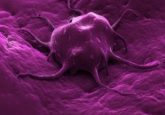Roles of p53 and p16 in triple-negative breast cancer

p53 and p16 are both tumor suppressors. This article summarizes the current investigation status on their roles and interaction in triple-negative breast cancer (TNBC) to explore their potential as prognostic, predictive and therapeutic targets. There is significant evidence implicating that p53 mutation as a driver plays an important role in tumorigenesis and progression of TNBC. p53 mutations are more frequently observed in TNBCs compared with ER-positive breast cancers. The presence of a p53 mutation is associated with poorer prognosis in TNBC patients. The status of p53 protein expression divides TNBCs into two biologically distinct subgroups (p53-positive vs p53-negative); p53-positive tumors have more aggressive behavior. p53 has clinical prognostic utility and is a promising target candidate for directed therapy for TNBC patients. p16 appears to play a significant role in tumorigenesis of TNBC through the Rb/p16 dysfunction pathway. A high level of p16 protein expression is associated with aggressive behavior and tumor proliferation of TNBC. The status of p16 expression may have potential predictive value for TNBC response to chemotherapy; further investigation is needed to support the proposal. p16 expression has been strongly correlated with p53 expression in TNBC, suggesting interactions between the two mutations in tumorigenesis. It has been proposed that the two tumor suppressors appear to be involved in early events of TNBC formation with subsequent interplay resulting in their mutual inactivation and, ultimately, leading to a proliferative environment.
Click here to view full article.




